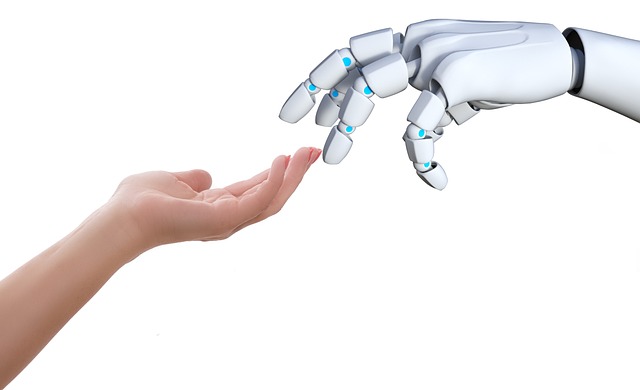Machine vision is what lets robots see. It’s the tech that allows a robot to capture and interpret visual data through cameras, sensors, and software. In the robotics world, that means recognizing objects, tracking movement, reading barcodes, detecting defects, and navigating real-world spaces.
Vision systems aren’t just an add-on—they’re a foundation for autonomy. Without them, most robots would be blind followers, stuck on pre-programmed paths or in repetitive tasks. With vision, they can understand dynamic environments, adjust in real time, and make smarter decisions without human input.
Industries are already relying on machine vision, and it’s only growing. In manufacturing, it drives quality control and precision assembly. In logistics, it handles sorting, scanning, and warehouse navigation. Agriculture uses it for crop health monitoring. Even in healthcare, surgical robots need clear vision for accurate procedures. Across the board, robots aren’t just executing—they’re perceiving.
If autonomy is the endgame, vision is what gets you there.
Smarter Robots at Work: Vision, Navigation, and Human Interaction
Industrial robotics is evolving beyond repetitive, pre-programmed tasks. Driven by advances in AI and machine learning, next-gen robots are being equipped with enhanced perception, smarter navigation, and refined interaction capabilities—making them more adaptable in real-world environments.
Object Recognition and Smart Sorting
Modern robots can now analyze visual input with far greater accuracy. With deep learning and computer vision:
- Robots identify objects by shape, color, texture, and even brand labels
- Smart sorting systems can prioritize items based on size, destination, or urgency
- Factories benefit from minimized sorting errors and faster throughput
These capabilities are especially valuable in logistics and warehouse applications, where item variation and volume are high.
Precision Navigation in Dynamic Environments
Fixed-path robots are becoming obsolete. Today’s autonomous mobile robots (AMRs) adjust their routes in real-time using sensors and onboard intelligence.
- Real-time mapping enables obstacle avoidance and route optimization
- Indoor navigation aligns with changing layouts and human movement
- Applications include hospital delivery bots, warehouse shuttles, and cleaner robots operating during peak hours
Precision navigation enhances both safety and efficiency in mixed settings.
Real-Time Inspection and Quality Control
Robots are taking on critical inspection roles using high-resolution cameras and AI-driven defect detection.
- Components are scanned on the assembly line in real-time
- Machine learning algorithms flag anomalies that human eyes often miss
- Integration with cloud platforms allows instant reporting and decision-making
This significantly reduces waste and ensures consistent product quality at speed.
Human-Robot Interaction (HRI) Improvements
As robots work more closely with humans, intuitive interaction becomes essential. HRI is a growing focus that blends robotics, psychology, and interface design.
- Voice commands, gesture recognition, and touchscreens offer more natural control
- Safety-first protocols allow robots to slow or stop around humans
- Robots can now interpret emotional cues and adjust behavior accordingly
Effective HRI makes robotics more accessible across industries, from automotive manufacturing to elder care.
The smarter the robot, the more flexible and collaborative it becomes—turning it from a tool into a true teammate in dynamic work environments.
Machine vision is the backbone of robotic perception. At its core, it relies on a few critical components: cameras, sensors, processors, and software. Cameras capture raw visuals, sensors feed data from depth or light variations, processors crunch the numbers, and software translates it all into something actionable.
When it comes to how machines see, there are two main setups: 2D and 3D vision systems. 2D systems interpret images like flat photographs. They’re great for identifying patterns, colors, and basic shapes. But if you need depth—like knowing how far a product sits on a conveyor—3D vision comes into play. Using stereo vision, time-of-flight sensors, or structured light, 3D systems give robots depth perception and spatial awareness.
Vision doesn’t just stop at seeing. In robotics, it feeds directly into decision-making. Whether a bot needs to grab a part, avoid an obstacle, or respond to a dynamic environment, vision systems supply the intel that powers those moves. It’s not just about detection. It’s about what happens after—a robot’s ability to choose and act based on what it sees.
Vision-powered AI and Adaptive Learning
AI is growing some serious eyes. Vloggers are starting to lean into computer vision—not as a gimmick, but as a tool to adapt fast. Cameras and AI tools can now process image data in real time, picking up on viewer reactions, lighting conditions, or even content pacing. The result? Smarter suggestions for scene shifts, higher-performing thumbnails, or instant adjustment of focal points.
But the real win is learning. As creators feed more content into these tools, the software gets better at predicting what’s likely to keep a viewer engaged. It’s a feedback loop: record, upload, review, adjust, repeat. Algorithms learn your style. You learn what resonates. Over time, creators can build smarter content strategies that evolve without totally burning them out.
It’s not about letting a machine take over your editing desk. It’s more like a creative co-pilot that sees a split second faster than you do.
Industrial robots aren’t just welding car frames anymore. The rise of advanced computer vision is pushing these machines beyond the factory floor and into more complex, less structured environments. Think crop monitoring in agriculture, patient support in healthcare settings, and automated sorting in high-volume logistics centers.
What’s changed? Vision systems now allow robots to perceive and adapt to messy, unpredictable conditions. A lettuce field doesn’t look like a conveyor belt, and a hospital room isn’t built like an assembly line. But with improved sensors and smarter software, robots can now adjust their behavior in real time, identifying objects, navigating tight spaces, and handling fragile materials.
It’s not about replacing workers in these sectors. It’s about offloading repetitive or physically taxing tasks and making operations more scalable. Vision-equipped bots can sort dozens of product types by sight, assist with elder care by detecting falls, or pick ripe produce without squashing it.
This shift is opening the door for automation in industries once off-limits to robots. For a closer look at robotics in manufacturing, check out How Industrial Robots Are Transforming Manufacturing Efficiency.
Lighting sensitivity is still a headache for creators working in variable environments. Natural light shifts, harsh backlighting, or fluorescent flicker can ruin a shoot—and most budget rigs or plug-and-play vlogging kits don’t adapt well. Yes, there are smarter sensors and camera presets now, but they come with a learning curve or a price tag.
Then there’s the tradeoff between processing speed and decision accuracy. AI-driven tools are helpful, but they’re not always right. Fast auto-edits might miss nuance. Face tracking or scene recognition can glitch in low light or crowd shots. Vloggers leaning on automation need to keep a close eye—trusting the machine, but double-checking the output.
Cost is still the elephant in the room, especially for smaller channels. Between high-end lighting kits, faster processors, and stable post-production tools, the price of staying competitive rises fast. If you’re not already monetizing well, it can feel like a catch-22. That’s why many creators are getting scrappy—finding middle-ground gear and building workflows around what they can afford, rather than chasing every upgrade.
Trends in Edge Computing and Onboard AI Vision
The line between camera and computing is starting to blur. With the rise of edge computing, more vloggers are using gear that processes data right on the device. That means less reliance on cloud rendering and faster feedback loops. Cameras with built-in AI can now frame shots automatically, track subjects, and even warn when lighting or focus dips. It’s not just fancy tech—it lets creators focus more on the story and less on fiddling with settings.
This shift is also tightening the integration between vlogging tools and wider systems like IoT and digital twins. As homes, studios, and even clothing become connected, creators are finding smarter ways to automate their workflows. Picture lights adjusting automatically when you hit record, or spatial audio adapting to your room in real time.
In the next 3 to 5 years, expect vlogging to become more frictionless. Content capture will be smarter, editing will be edge-assisted, and AI will help cut turnaround time without cutting creative control. The best part—it’s not just for big-budget creators. Costs are dropping, features are scaling, and this kind of tech is becoming table stakes for anyone wanting to stay relevant.
Machine vision is becoming a foundational layer in robotics, not just a feature. It’s what allows machines to shift from simple task repeaters to context-aware systems. With the ability to see and interpret the world, robots stop being blind tools and start edging closer to real collaborators.
This matters because interpreting visual data in real time unlocks a whole new level of decision-making. A warehouse robot, for example, can now reroute itself around obstacles. A medical bot can detect changes in a wound. These aren’t pre-programmed responses anymore, they’re reactions based on visual cues—something humans take for granted.
The real shift is that machine vision links perception to autonomy. When paired with stronger processors and smarter algorithms, robots start making judgment calls. They’re not just doing what they’re told—they’re adapting. That adaptive behavior is what pushes them from appliance to partner. And that’s a big leap.


 Isaac Lesureneric is a tech author at gfxrobotection focusing on digital security, automation, and emerging technologies. He shares clear, practical insights to help readers understand and adapt to the rapidly changing tech world.
Isaac Lesureneric is a tech author at gfxrobotection focusing on digital security, automation, and emerging technologies. He shares clear, practical insights to help readers understand and adapt to the rapidly changing tech world.

